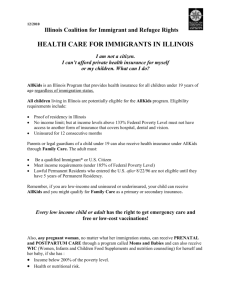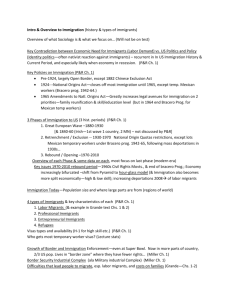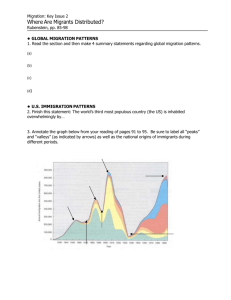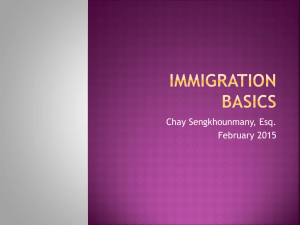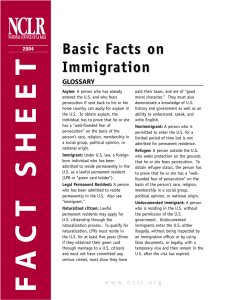There is No Line (SPLC 2009)
advertisement
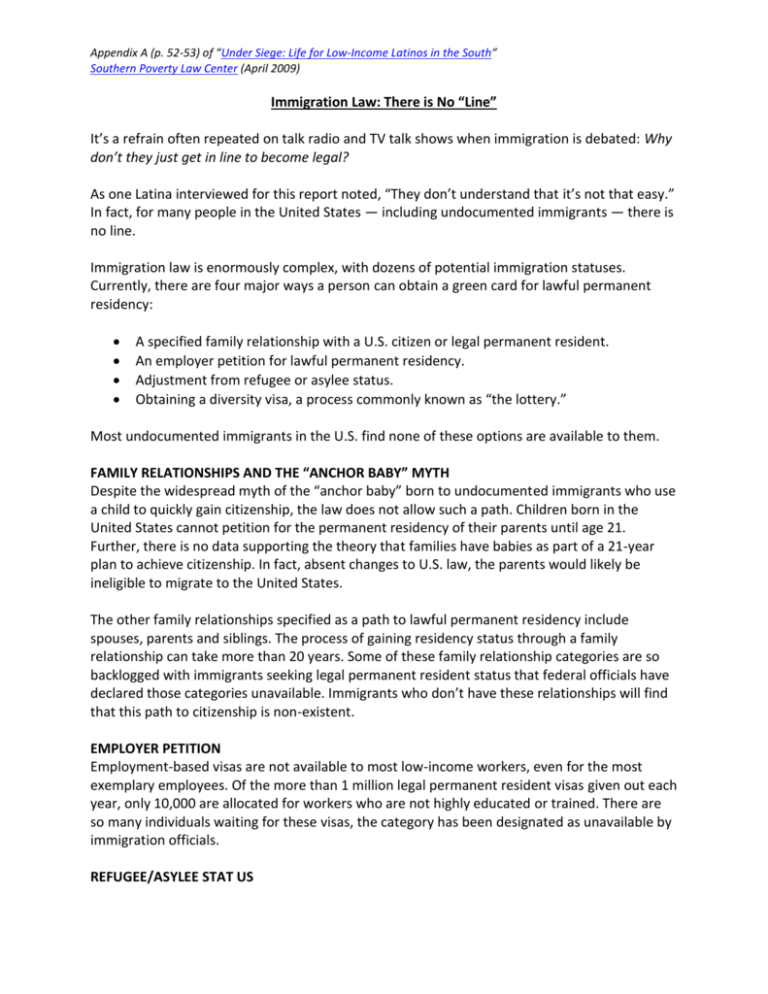
Appendix A (p. 52-53) of “Under Siege: Life for Low-Income Latinos in the South” Southern Poverty Law Center (April 2009) Immigration Law: There is No “Line” It’s a refrain often repeated on talk radio and TV talk shows when immigration is debated: Why don’t they just get in line to become legal? As one Latina interviewed for this report noted, “They don’t understand that it’s not that easy.” In fact, for many people in the United States — including undocumented immigrants — there is no line. Immigration law is enormously complex, with dozens of potential immigration statuses. Currently, there are four major ways a person can obtain a green card for lawful permanent residency: A specified family relationship with a U.S. citizen or legal permanent resident. An employer petition for lawful permanent residency. Adjustment from refugee or asylee status. Obtaining a diversity visa, a process commonly known as “the lottery.” Most undocumented immigrants in the U.S. find none of these options are available to them. FAMILY RELATIONSHIPS AND THE “ANCHOR BABY” MYTH Despite the widespread myth of the “anchor baby” born to undocumented immigrants who use a child to quickly gain citizenship, the law does not allow such a path. Children born in the United States cannot petition for the permanent residency of their parents until age 21. Further, there is no data supporting the theory that families have babies as part of a 21-year plan to achieve citizenship. In fact, absent changes to U.S. law, the parents would likely be ineligible to migrate to the United States. The other family relationships specified as a path to lawful permanent residency include spouses, parents and siblings. The process of gaining residency status through a family relationship can take more than 20 years. Some of these family relationship categories are so backlogged with immigrants seeking legal permanent resident status that federal officials have declared those categories unavailable. Immigrants who don’t have these relationships will find that this path to citizenship is non-existent. EMPLOYER PETITION Employment-based visas are not available to most low-income workers, even for the most exemplary employees. Of the more than 1 million legal permanent resident visas given out each year, only 10,000 are allocated for workers who are not highly educated or trained. There are so many individuals waiting for these visas, the category has been designated as unavailable by immigration officials. REFUGEE/ASYLEE STAT US Appendix A (p. 52-53) of “Under Siege: Life for Low-Income Latinos in the South” Southern Poverty Law Center (April 2009) Refugee or asylee status is a rare commodity for Mexican or Central American residents. Few people from these areas have been granted either status in recent years. In order to qualify, individuals must face a “well-founded fear of persecution on account of race, religion, nationality, membership in a particular social group, or political opinion.” Asylum is not an option for those seeking to escape crushing poverty. “THE LOTTERY” The odds are long in the diversity visa “lottery.” In this lottery, about 50,000 visas are awarded each year to eligible individuals. Yet more than 6 million people from around the world applied in 2007. Individuals from Mexico and most Central American countries are flatly ineligible for these visas because they are reserved for countries with small numbers of immigrants to the United States. A PAINFUL CHOICE Even for people otherwise eligible to become permanent residents — such as those married to a U.S. citizen — recent changes to immigration law make it impossible for many of them to adjust their status. From 1994 until 2001, Section 245(i) of the Immigration and Nationality Act allowed certain individuals who were otherwise eligible for immigrant visas, but entered the United States without inspection or fell out of lawful status, to become lawful permanent residents without traveling to a U.S. consulate outside the country to obtain this status. Section 245(i) grew in significance after 1996, when Congress enacted a law with a provision known as the “3 and 10 year bars.” Under this provision, an immigrant who is unlawfully in the United States for more than 180 days and then leaves the country is barred from re-entry for three or 10 years. The length of the re-entry ban depends on the length of the illegal stay. Until 2001, Section 245(i) provided a path to legal permanent residence that didn’t require eligible aliens to leave the country — a requirement that would subject them to the re-entry ban. Because of more recent changes to immigration law, however, countless people who are otherwise eligible to adjust their status — including thousands of people married to U.S. citizens — are subject to that ban. Many people now face the painful choice of either leaving the country and their family for 10 years for the chance to become a legal permanent resident or remaining in the United States with their family and giving up the hope of ever achieving legal status.

